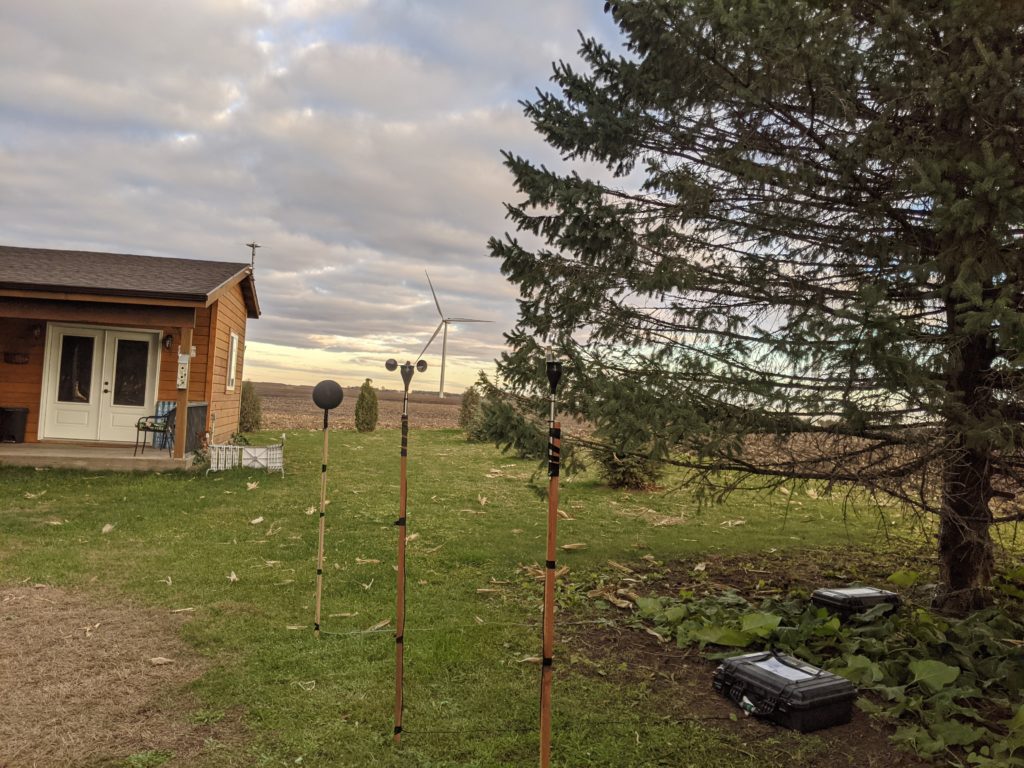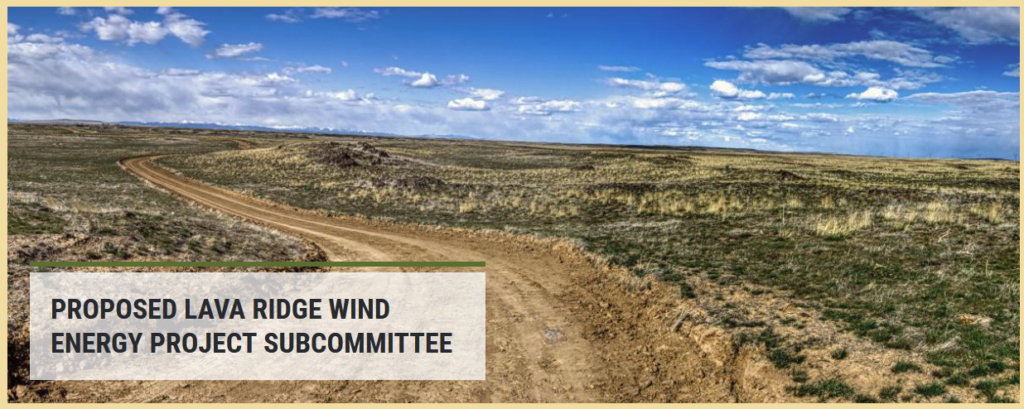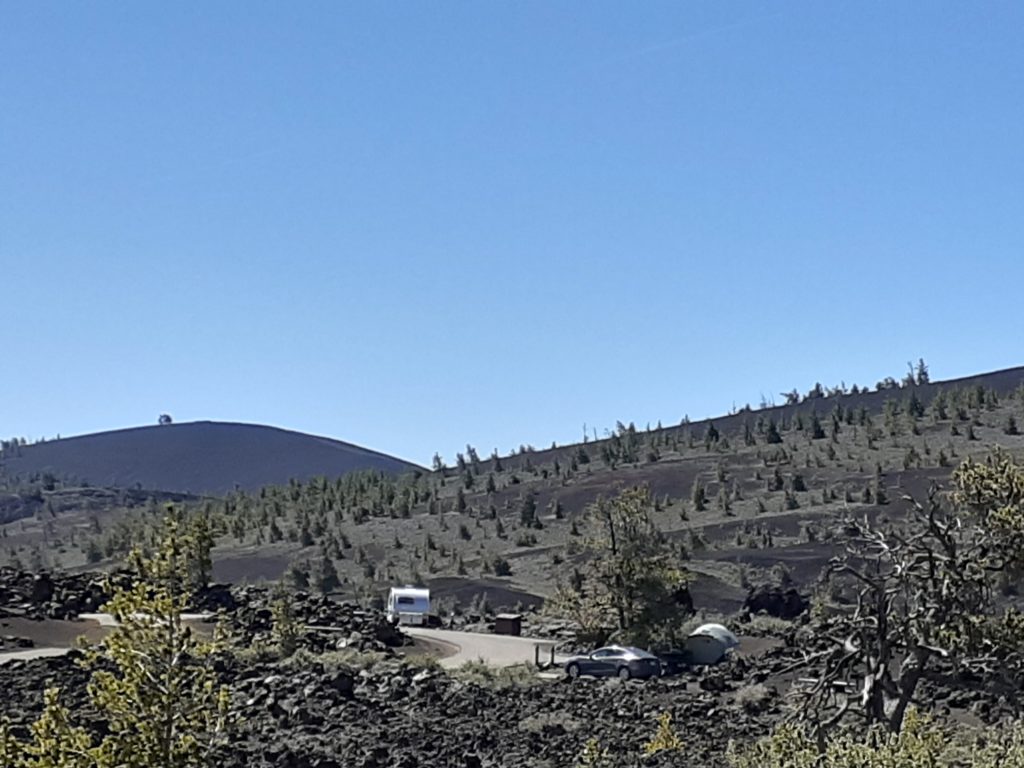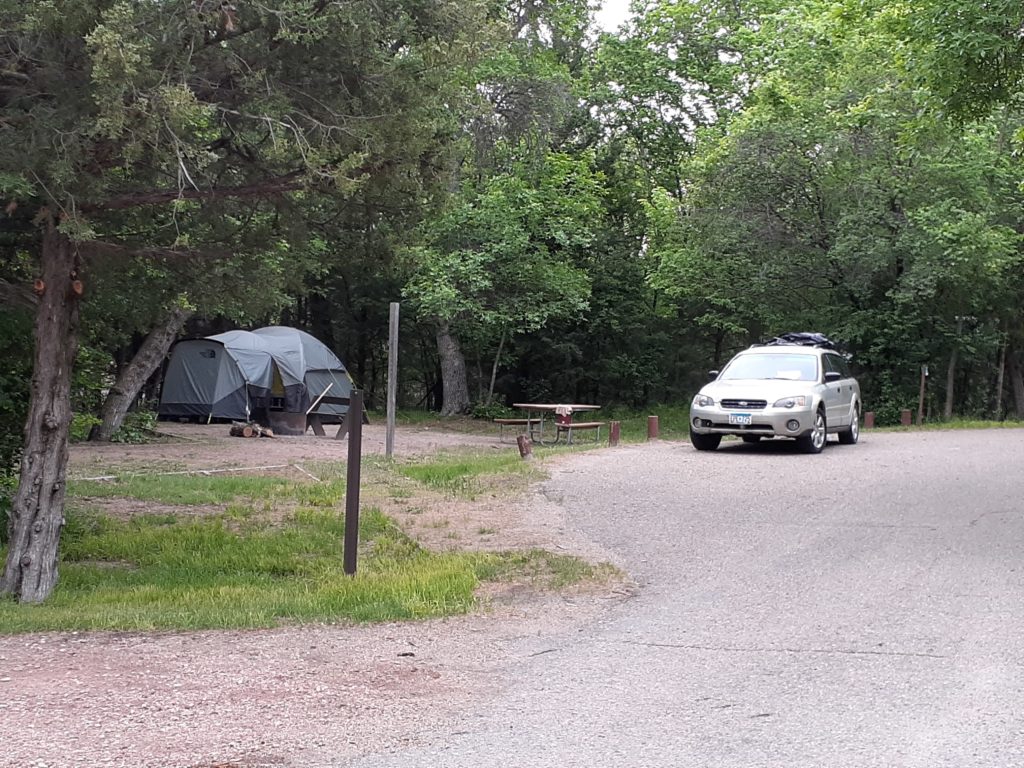Just filed – Petition for Reconsideration – Freeborn Wind
August 28th, 2022

Testing, one, two! Check, HEY!
On August 8, 2022, the Minnesota Public Utilities Commission issued its “Order Accepting Post-Construction Noise Monitoring Report and Compliance Review.” It’s a jaw-dropper:
And so, 20 days later, we file:
Onward. Xcel Energy has 10 days to respond, well, anyone who wants to has 10 days to respond, and then the Commission will take it up, or not and let it languish and be denied by default.
Notice of BLM Lava Ridge meeting
August 22nd, 2022
As we left our Craters of the Moon Nat’l Monument campsite in Idaho in May…
… and headed southeasterly, on the way to the rather new Minidoka Nat’l Historic Site, Alan discovered that there was a Lava Ridge wind project proposed for the area.

Here’s today’s notice from BLM:
Details:
Thursday, August 25, 2022
9:00 a.m. – 5:00 p.m. Mountain Daylight Time
Virtual via Zoom – Zoom Registration
The first meeting was on July 7, 2022:
View the recorded meeting here
MISO & Xcel Energy, et al.’s Dream
July 25th, 2022
I’ve been working on digging info about Xcel Energy’s proposal in May of a big honkin’ xmsn line from “Lyon County” to Sherco substation, wanted so they can retain transmission interconnection rights.
And today, this, from the MISO “July 26, 2022 Executive Update” appears in the inbox, the dream of MISO and Xcel... errrrr… “Grid North Partners” right?
Here’s the MISO Planning Committee meeting handout for May 20, 2022 meeting:
20220527 PAC Item 02a MTEP21 LRTP Report and Feedback Review PresentationPublished 05/25/2022
20220527 PAC Item 02b BALLOT MTEP21 LRTP Tranche 1 AddendumPublished 05/27/2022
20220527 PAC Item 02b MOTION MTEP21 LRTP Tranche 1 AddendumPublished 05/20/2022
20220527 PAC Item 03 CTA Update PresentationPublished 05/20/2022
20220527 PAC Item 03 Tariff Redlines for Upgrade FilingPublished 05/20/2022
For background, check out MTEP 21 (MTEP = MISO Transmission EXPANSION Plan, no secret the intent):
Good grief…
In the STrib:
Utilities plan to spend $2.2B on new power line projects in Minnesota
From the article:
Working remotely?
June 30th, 2022
Is that sort of like the “working hard” v. “hardly working” conundrum?
Last week was almost a pre-COVID “back to normal” with a trip to Freeborn County to meet with two clients, new pipeline and long-time wind. I so miss being on the road, miss trucking, and miss travel out and about to meet with folks. Timing worked so well, it was a good opportunity to take out the trailer and continue to debate about whether it’s time for the trailer to go on to new owners (oh, that mpg hurts!), to debate whether a tent is really workable. And the debate is over. Now to clean it out and sell… sigh…
The Freeborn Wind project is up at the PUC next Thursday, July 7, to address the noise studies, not that they’ll do anything — seems the primary goal is to duck and cover, not deal with noisy turbines.
And the pipeline is going to be a recurring issue. There’s the “little” line going in under Northern Natural Gas’ FERC blanket authority (seems cost/size of project determines whether NNG applies to FERC); there’s the Ventura North E-Line, part of NNG’s Northern Lights 2023 Expansion applied for at FERC earlier this year; and supposedly this month, the “Albert Lea” project. We’ll see how this goes. I know there’s natural gas storage under the Prehn home along Hwy 13, below Hwy. 60, north of Waseca, and DOH, that gas has to get there somehow. And there’s the east/west gas transmission line along Hwy. 14, through my client’s yard in Kasson (and TOO MANY others). But check the map — I didn’t know that there are this many lines.
More to follow…
The Lava Ridge wind project is likely the country’s largest wind project thus far, with turbines twice the size of those in Minnesota. Here’s the “Magic Valley” developer page: https://www.magicvalleyenergy.com/
And the BLM page for the project:
LAVA RIDGE WIND PROJECT
Cut & paste of some basic facts for the project:
BLM National NEPA Register — Lava Ridge Wind Project
The “Friends of Minidoka” are actively challenging this project, more info here, the link is dated, a cut & paste blurb from BLM:
Bureau of Land Management Extends Public Scoping for the Lava Ridge Wind Project
The prerecorded presentation and scoping posters are available on the project website at https://go.usa.gov/xFKxg.
Contact info for BLM, please contact Kasey Prestwich, Lava Ridge Wind Project EIS Project Manager, Phone: 208-732-7204, E-mail: kprestwich@blm.gov.
From that Scoping Report, here’s another, better map:
I’d expect the EIS will take at least a few more months, and perhaps not be released until next year. I’ve asked and will report in if I get a response. And here ’tis, expected that “Draft EIS will be published in September 2022 and a Notice of Availability for the Final EIS will be published in April 2023.”
Just in today (I’d requested to be on developers project list) – there’s a meeting on Saturday,11a-1p at College of Southern Idaho, Taylor Building, Rm. 276:










